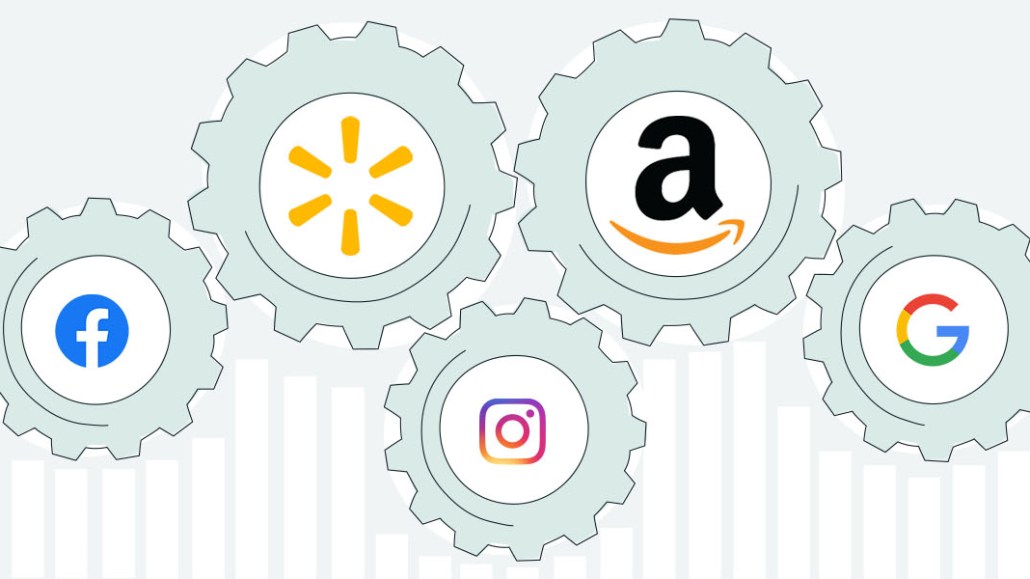Save 50% on a 3-month Digiday+ membership. Ends Dec 5.

Manufacturers have long relied on retailers to build customer relationships and sell their products. Marketers in industry verticals such as apparel, CPG and electronics have primarily focused on the top of the funnel to build their brands and generate demand while resellers focused on the bottom of the funnel to convert shoppers into buyers.
Even before the coronavirus crisis, marketers were connecting with and serving customers directly via e-commerce. Marketing teams began expanding beyond brand advertising to include performance advertising, for example, but the shift for many has gone well beyond marketing.
Progress made by manufacturers varies widely, and the pandemic has created a sprint toward e-commerce. Manufacturers who led, who invested seriously in developing e-commerce operations early on, can now reap the rewards of new direct customer relationships and rapidly growing e-commerce sales. Those that dragged their feet and now wish to catch up face obstacles. But whether they lead the pack, straggle at the back or fall somewhere in the middle, there is an expanding ad channel that can help. Commerce advertising can empower manufacturers to convert consumer demand into sales, driving performance marketing results in new ways.
Retailers offer manufacturers a new performance marketing channel
Since the moment giant retailers like Amazon and Walmart launched their own advertising solutions, commerce advertising has grown to become the third-largest online marketing channel, enabling manufacturers to reach active online shoppers with ads.
Combined with retailers’ rich first-party purchase data and auction-based, search-triggered ads, this channel is growing faster than paid search and social did in their first years. Manufacturers have seized the opportunity to advertise directly to consumers as part of their evolved strategy to “get them over the last mile” regardless of where customers want to buy.
For manufacturers that wish they had spent more time and resources preparing for e-commerce, commerce advertising bridges online demand to traditional retail channels. Commerce ads can be managed on marketplaces such as Amazon and Walmart to keep products front and center among huge groups of online shoppers in a profitable way. Because the marketplace closes the sale and fulfills the order, even manufacturers who are less prepared on the back end can produce significant results. Some brands may even find it profitable to drive traffic from other performance-based channels to these marketplaces to take advantage of the embedded conversion and fulfillment.
Meanwhile, the most prepared manufacturers can tap this emerging channel to bolster sales volume through some of their top resellers in a profitable way, using commerce advertising to complement the other channels in their performance marketing mix. Additionally, leadership can incentivize performance marketing teams to take advantage of this new channel, even with sales happening on resellers’ sites.
What CPG and other manufacturers need to know
As CPG and other manufacturers shift and refine their approaches to performance marketing in their mix, they can add some foundational knowledge about performance marketing to their strategies and tactics. The following points highlight what performance marketers need to know.
#1 – Performance marketers focus on the bottom of the funnel
Brand marketing builds mind share and trust among consumers and creates demand at the top of the funnel. Performance marketers consider how consumers move through the purchase path and how to encourage them to buy. Sales, coupons, limited selection notifications, promotions, strong calls to action, fear of missing out (FOMO) and other triggers are in their arsenals.
Performance marketers stay close to consumers on their paths to purchase and provide the nudge or info needed to keep them progressing. This requires a strong understanding of how key digital channels (search, social, commerce) work together to impact and influence shoppers to take a desired action in a consideration process that could take minutes, hours or days.
#2 – Performance marketers must think short-term
Brand marketing is about maintaining a healthy company for years. Automotive brands, for example, often seek to build relationships with young people before they can even drive.
Performance marketers focus on today. In the automotive world, they’re often seeking test drives. Many check their campaign performance every morning and afternoon to ensure things are running smoothly and according to plan. Are they spending the budget correctly? Which channels need a boost and which should they pause? How can ads be optimized now to show better results tomorrow? Performance marketers are constantly making in-flight adjustments across advertising channels to double down on what’s working and prune away waste.
#3 – Performance marketers focus on the customer
Performance marketing is about helping buyers as they navigate their way through the purchase path. What problems do they face? Why do these issues matter? How can they best solve these problems?
At each step, they will have different concerns and questions, and it’s up to performance marketers to guide them along their path and convert interested shoppers into buyers.
COVID-19 has fast-forwarded the brand-to-performance evolution
The commerce advertising solutions now offered by retail giants give manufacturers powerful tools to directly market to shoppers, and the COVID-19 pandemic has played a recent role in that approach. Consumers that never thought they would buy essentials and other products online are forming new habits, some of which will persist after the crisis. As many CPG and retail brands see e-commerce sales growing, seamlessly transitioning to add performance advertising to their scope will remain a top priority for many formerly brand-only marketers.
More from Digiday

Overheard in the Media Agency Report: How Assembly, IPG, Horizon and others use AI and will spend on ads in 2026
In this is behind-the-scenes look at Digiday’s 2025 Media Agency Report, ad execs discuss how the GDP and international sports could impact 2026 spend and how agencies and their clients are actually applying AI tools.

Instacart tripled its smart cart store count this year
Instacart’s smart carts are in triple the number of stores this year than they were in 2024, the company told Modern Retail.

Future of Marketing Briefing: The tells and flops that will define Omnicom-IPG mega holdco
The real story will sit in how this newly fused entity behaves — whether it breaks from the patterns that defined both parents or simply scales them.





